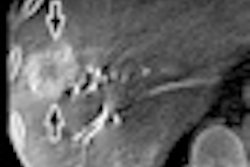Tuesday, November 27 | 3:15 p.m.-3:25 p.m. | VSPD32-02 | Room S102AB
In this scientific presentation, researchers from Carestream Health will share how task-specific techniques can be employed that would promote dose reduction in pediatric imaging in digital radiography (DR) without negatively influencing diagnostic image quality.Continued dose reduction in x-ray imaging is of prime importance in pediatric radiology. A 2006 report by the U.S. National Council on Radiation Protection and Measurements (NCRP) found that the average American was exposed to more than seven times as much ionizing radiation from medical procedures compared with exposure in the early 1980s, according to Jacquelyn Whaley, a Carestream employee.
The Image Gently campaign was launched in 2007 to raise awareness of dose reduction, and this year the U.S. Food and Drug Administration (FDA) published a draft guidance on information to be provided in FDA regulatory submissions for x-ray imaging devices with indications for use in pediatric populations.
Radiography is a key component to dose reduction, according to Whaley and colleagues. To promote continued dose reduction in the modality, Carestream researchers explored the task-specific dose reduction potential in neonatal intensive care unit imaging through a clinical study.
Neonates imaged for the chest currently receive an effective dose of 5 to 20 µSv. To see if that dose level could be reduced, researchers acquired chest images of 11 neonatal cadavers with a cesium iodide (CsI) DR detector at 50 and 70 kVp and three effective doses: 2, 10, and 25 µSv.
Four experienced pediatric radiologists independently viewed each image and performed three feature-based tasks to see if their accuracy varied according to the dose level used to acquire the images. The tasks included identifying the carina, identifying the tip of the endotracheal tube (ETT), and marking the longest dimension of the largest pneumatocele or lucency in the lungs.
The change in variability of marking the carina and ETT at various energy and effective dose levels was found to be statistically and/or clinically irrelevant. Accuracy in marking the pneumatocele was not affected by energy level, but it decreased significantly with a reduction in effective dose.
Dose could be reduced for certain clinical tasks, while higher doses could be reserved for other studies, the researchers concluded.
"Our study demonstrated that task-specific techniques could be employed such as a low-dose ETT study and a higher-dose lung parenchymal study, which would promote dose reduction in pediatric imaging without negatively influencing diagnostic image quality," Whaley told AuntMinnie.com.



















